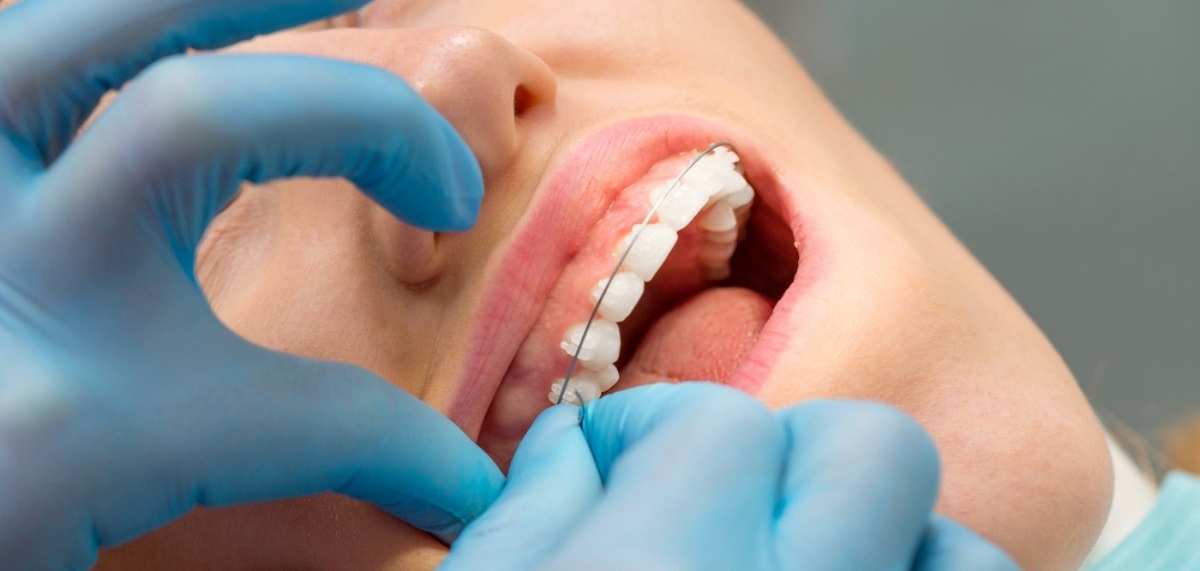Unknown Facts About Causey + Hall Orthodontics
Unknown Facts About Causey + Hall Orthodontics
Blog Article
Causey + Hall Orthodontics for Beginners
Table of ContentsHow Causey + Hall Orthodontics can Save You Time, Stress, and Money.About Causey + Hall OrthodonticsMore About Causey + Hall OrthodonticsThe 8-Minute Rule for Causey + Hall OrthodonticsAbout Causey + Hall OrthodonticsThe 6-Second Trick For Causey + Hall Orthodontics
What is the difference between a dental practitioner and an orthodontist? All dental professionals, consisting of orthodontists, treat the teeth, gums, jaw and nerves.Orthodontists and dental professionals both give dental treatment for individuals. The main difference is that becoming an orthodontist needs a certain specialty in treating the imbalance of the teeth and jaw.
An orthodontist is a dental practitioner that has undertaken training to specialize in the diagnosis, avoidance and therapy of irregularities in the jaw and teeth. Their training includes fixing these existing problems. They can also recognize potential troubles in teeth positioning that might establish when conditions are left without treatment. Orthodontists can help people of all ages - https://causey-plus-hall-orthodontics.jimdosite.com/.
Causey + Hall Orthodontics - Truths
This includes all the required education to become a general dental expert. According to the American Trainee Dental Association (ASDA), it indicates you will certainly require to have either a Medical professional of Medicine in Dentistry (DMD) or a Doctor of Oral Surgery (DDS). Simply put, orthodontists need to finish oral school and then obtain an orthodontics specialized education.


When you have a healthy and balanced bite, you can talk, chew and eat properly, thus boosting your lifestyle. Other than the orthodontist, we frequently see assistants dealing with these oral experts in their clinics. So, what is an orthodontist assistant called? They're properly called orthodontic assistants. They are specialized aides, and are trained to handle dental gear and supply preventative oral health care.
Everything about Causey + Hall Orthodontics
At Advanced Orthodontics, we supply people with a holistic therapy experience. In addition, we use adjustable therapy timetables, versatile settlement options and an enjoyable, delightful experience. Call ( 480) 357-4900 today to learn more and routine an appointment.
An orthodontist is a dental practitioner educated to identify, stop, and deal with teeth and jaw irregularities. They fix existing problems and are educated to identify troubles that may establish in the future. Orthodontists deal with individuals of any ages, from kids to adults. People frequently link a perfect smile with good health.
, yet not all dentists are orthodontists. They focus on two locations: Just how to correctly and securely move teeth Exactly how to appropriately assist development in the teeth, jaw, and faceOnce an orthodontist has actually completed training, they have the option to come to be board licensed.
Causey + Hall Orthodontics Fundamentals Explained
Imbalance, or malocclusion, is one of the most usual reason people see an orthodontist - clear aligners. It is genetic and is the result of size differences between the top and reduced jaw or between the jaw and teeth. Malocclusion leads to tooth overcrowding, a twisted jaw, or irregular bite patterns. Malocclusion is normally treated with: Your orthodontist connects steel, ceramic, or plastic square bonds to your teeth.
If you have just small malocclusion, you might be able to use clear dental braces, called aligners, rather than traditional braces. Some individuals need a headwear to aid try these out move teeth into line with stress from outside the mouth. After dental braces or aligners, you'll require to use a retainer. A retainer is a custom device that maintains your teeth in position.
They're frequently used on youngsters. They can develop extra area in the mouth without needing to draw teeth. If you have a serious underbite or overbite, you may need orthognathic surgery (also called orthodontic surgical treatment) to extend or shorten your jaw. Orthodontists utilize wires, surgical screws, or plates to support your jaw bone.
The Greatest Guide To Causey + Hall Orthodontics
During your very first orthodontic consultation, you'll likely have: A dental examPhotos taken of your face and smileDental X-raysPanoramic (360 degree) X-rays of your face and headImpressions to produce mold and mildews of your teethThese examinations will certainly help your orthodontist understand just how to wage your treatment. An orthodontist is a dental practitioner that's had training to treat your teeth and jaw.
Orthodontists are dental professionals but not all dental experts are orthodontists. Orthodontists are focused on your bite, or the way your teeth fit together, and the straightness of your teeth.
Not known Facts About Causey + Hall Orthodontics
What precisely does an orthodontist do? Orthodontists are dental experts that focus on fixing abnormalities in the teeth and jaws.

Clear aligners, like Invisalign, are a popular option for clients seeking a much more discreet treatment option. These detachable trays are custom-made to progressively move the teeth's position. Headwear may be used in combination with braces or aligners to apply extra targeted pressures, specifically for dealing with jaw discrepancies. In instances of slim jaws, palatal expanders can be made use of to produce room for appropriate tooth positioning.
Report this page